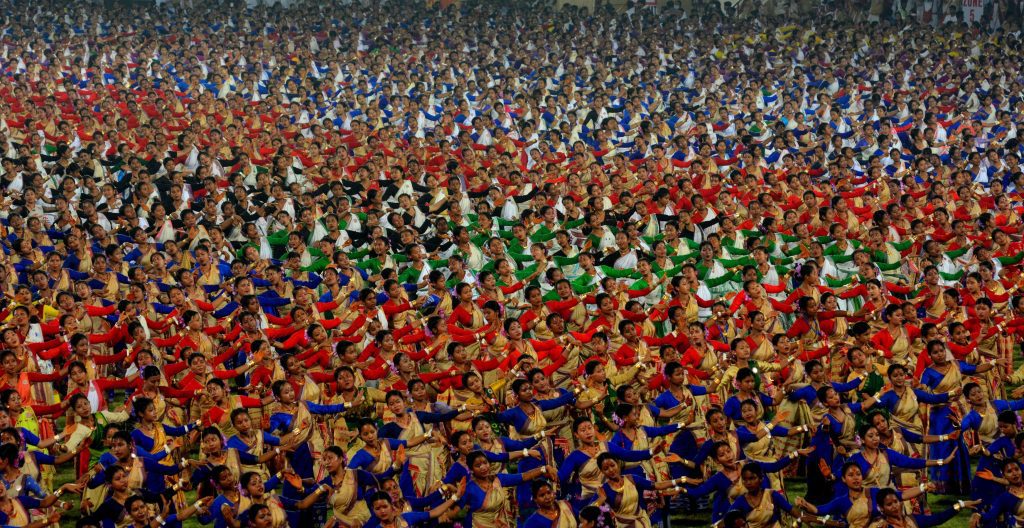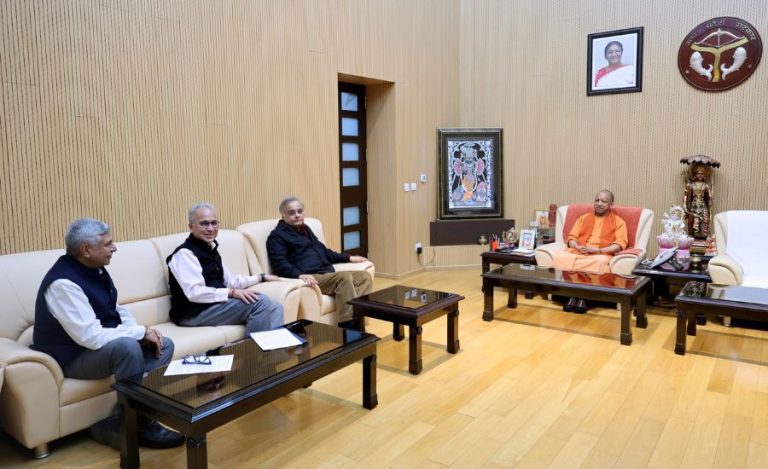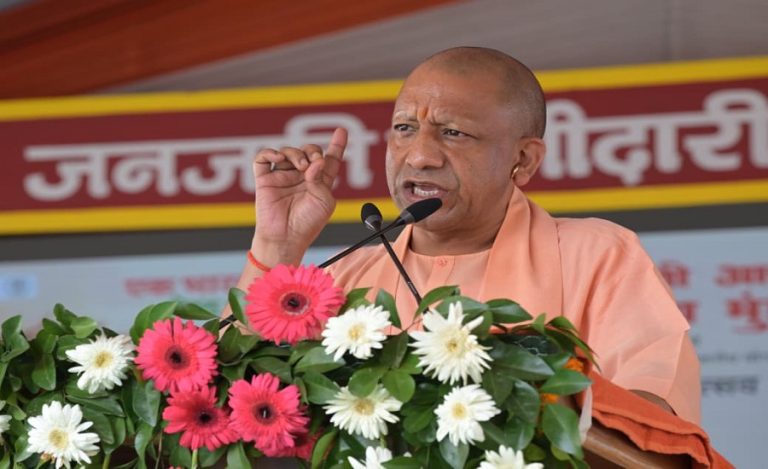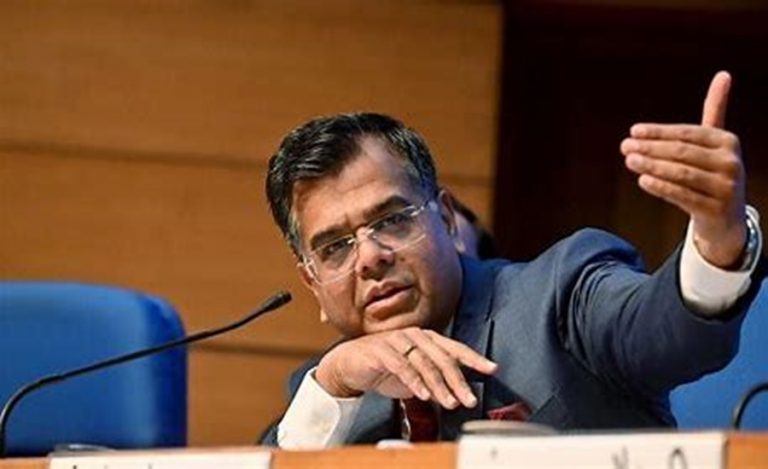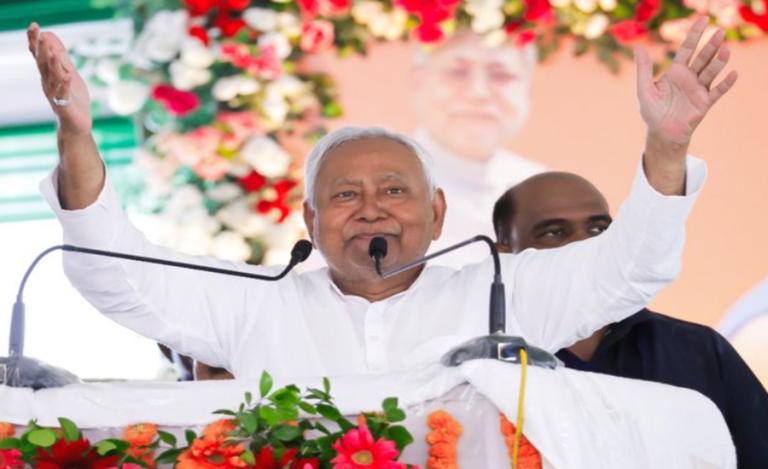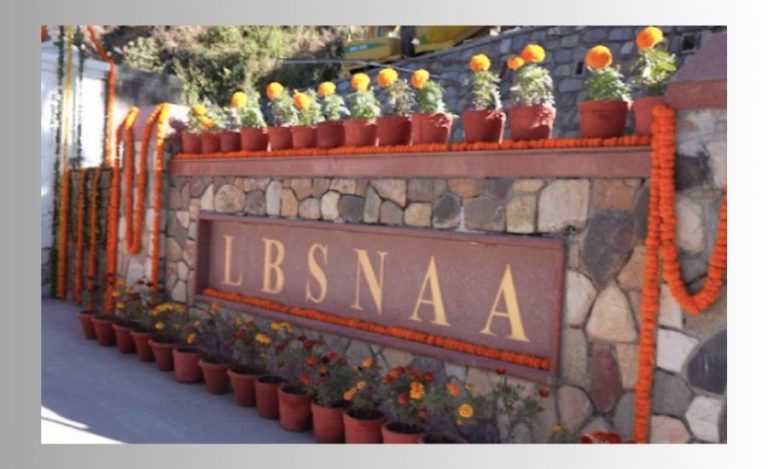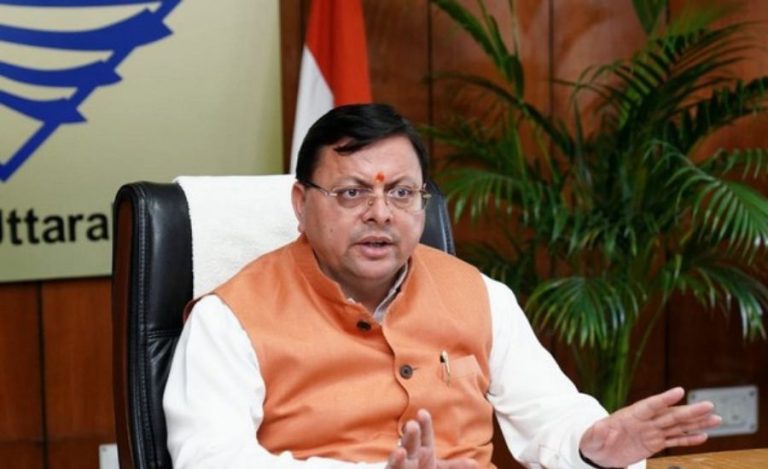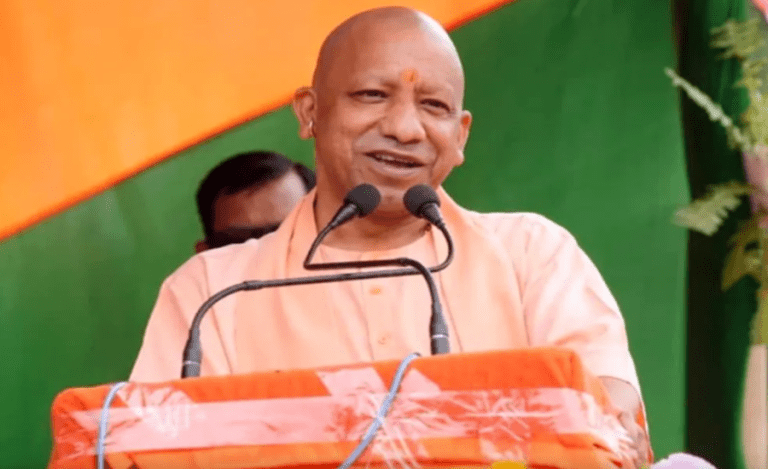There is a saying in Oxomiya that goes ‘Nol morile gojali olabo xeye xongxaror niti…’ that translates to ‘The death of the plant makes way for the shoot…’. As peace makes way in a state that has seen decades of conflict and counter-militancy operations that have cost hundreds of lives, Assam now prepares for this year’s Rongali Bihu, its biggest spring festival and the Oxomiya New Year with an ambitious target: Setting a Guinness world record for the largest number of Bihu dancers congregated at a single place. And it did go off well, by all accounts, at the Sarusajai stadium in Guwahati today.
The biometrics showed an 11,000-plus figure, while the certificate for the achievement will be presented tomorrow, for a reason. In attendance tomorrow: Prime Minister Narendra Modi along with guests of the G20 Summit. On offer: An unbelievably large Bihu dance ever, chiselled and fine-tuned even more than what it was today. The aim of the mega Bihu performance was to set a new Guinness World Record for the largest Bihu dance performance at a single venue.

It was a busy day for both Chief Minister Himanta Biswa Sarma, his colleagues, and top police officials today, as they sat on the dais watching the attempt. As television channels beamed the dance, Assam swelled with pride and joy, looking forward to the endeavour to put the Bihu dance on the world stage, with a never-before event. Tomorrow’s presentation of the certificate is a mere formality now, say those who packed the stadium today.
Out in the countryside, this is the season that the kopou phul blooms, the foxtail orchid that is the Bihu dancer’s favourite flower to be worn on her hair, coupled with an attire of mugar mekhela sador, the festive Oxomiya dress for women, woven on hand looms, out of the GI-tagged muga silk. Stuck into her tight bun is a gogona, a bamboo mouth harp that she is adept at playing. The boys, dressed in their dhotis and white vests, or in the modern day, muga shirts, with the famous Oxomiya gamosa tied around their heads provide the music, a combination of bufffalo horn pipes, small cymbals and the famous Oxomiya Bihu dhol, and small cymbals or taals that are unique to the Oxomiya Bihu. Everything accompanying Bihu is symbolic of the beauty of the land of Oxom: the dhol, that has through the ages turned into an almost codified form of drum playing, the songs that speak of Nature and love, the pepa made of buffalo horn, the gogona made of bamboo, the xutuli, a small instrument moulded out of mud that the women play, scripting sounds of spring birds…
‘Rati pore pore phesai kuriliyai o, Oi amar Bihu bhangota nai…’ goes a line in a popular Bihu song, meaning ‘even as the owl calls at the break of dawn, there is no one who can stop us from dancing our Bihu…’ This year it comes accompanied by an attempt to set a world record. The certificate is expected tomorrow, as guests from Delhi and around the world get to watch 11,000 dancers dance their riveting Bihu…

